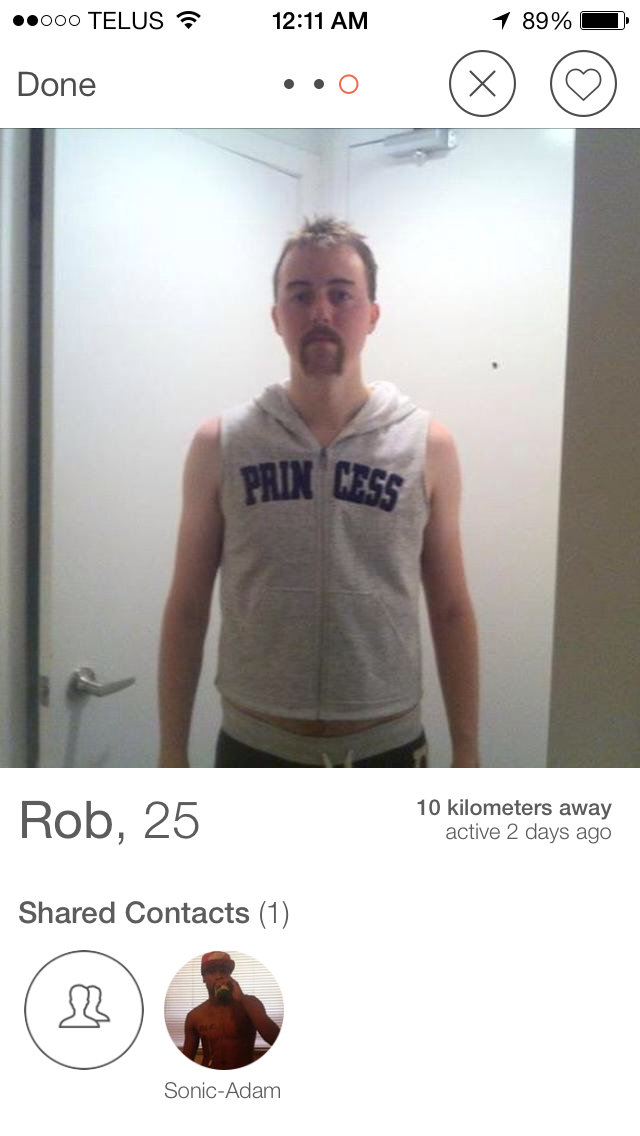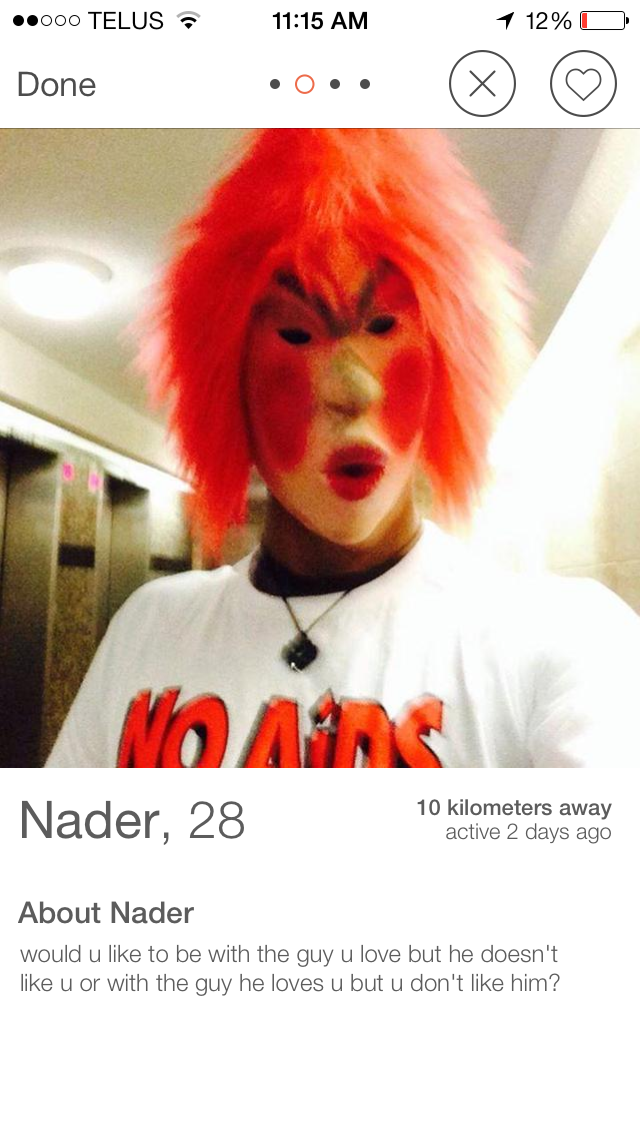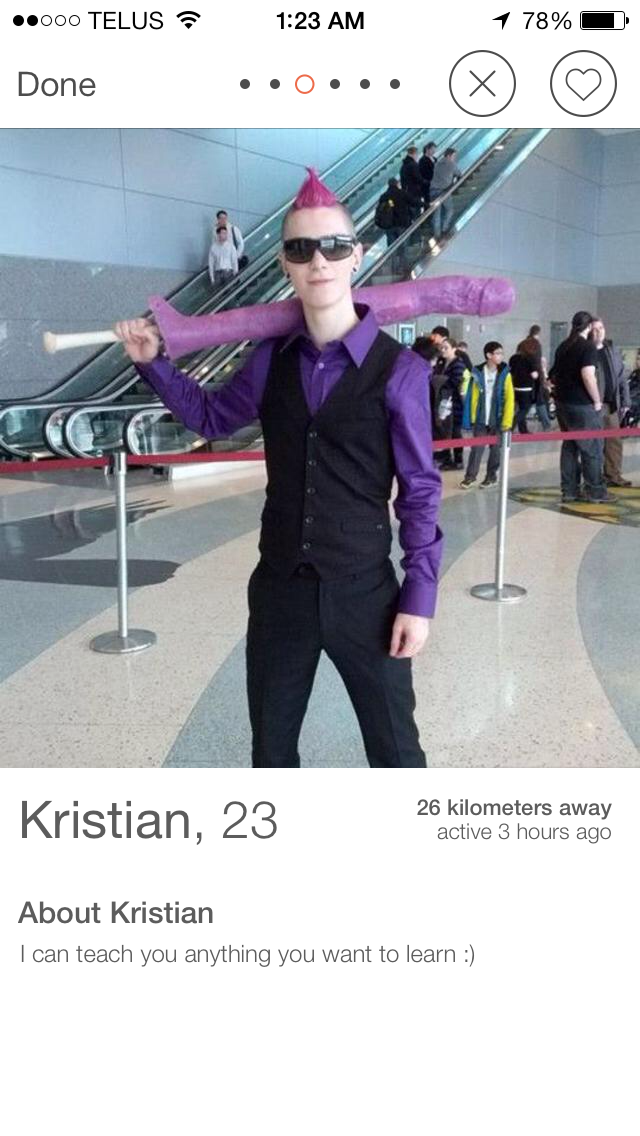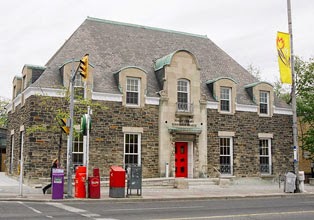 Tinder is an online dating app. Connected through Facebook, the app allows users to swipe through people in their general geographic location (user sets range from 2-160 kilometres). Users set the age range (18-50+) and gender they wish to view. Users will swipe right ("like") or left ("nope") on each profile that appears one at a time like flash-cards. This app is usually accessed through a mobile device (i.e. cell phone). The profile, linked with Facebook, allows users to upload up to five photos (chosen from their Facebook profile): it includes the person's first name, age, any shared interests (indicated by pages "liked" on Facebook), or mutual (Facebook) friends. The app allows you to add up to 500 characters under an "About Me" column. In this section, users are encouraged to participate in self-reflection: they have a short amount of space to sell themselves to strangers. If you swipe right ("like"), and the user also swipes right for you, then it's a match and a conversation application is opened between both users.
Tinder is an online dating app. Connected through Facebook, the app allows users to swipe through people in their general geographic location (user sets range from 2-160 kilometres). Users set the age range (18-50+) and gender they wish to view. Users will swipe right ("like") or left ("nope") on each profile that appears one at a time like flash-cards. This app is usually accessed through a mobile device (i.e. cell phone). The profile, linked with Facebook, allows users to upload up to five photos (chosen from their Facebook profile): it includes the person's first name, age, any shared interests (indicated by pages "liked" on Facebook), or mutual (Facebook) friends. The app allows you to add up to 500 characters under an "About Me" column. In this section, users are encouraged to participate in self-reflection: they have a short amount of space to sell themselves to strangers. If you swipe right ("like"), and the user also swipes right for you, then it's a match and a conversation application is opened between both users.Unlike most dating sites, this app relies predominantly on images: users must tap on an image in order for shared interests, mutual friends and "about me" columns to appear. It is easy to swipe left or right without opening each profile. Similar to Michael Wesch's anthropological study of YouTube, Tinder can be seen as an example of media mediating human relationships. A basic visual anthropological analysis would note users are presenting themselves in a certain way, to attract attention from others in hopes of connecting with someone they are interested in. Each users methods will vary. Expectations are influenced by the visual aspect of the app: some users believe, since the match is based almost solely on physical attraction, that connections will be mostly shallow or sexual.
Many users are on Tinder as a way to boost their self-esteem - to see how many people who they find attractive will feel the same way about them. These users usually have no intention of meeting people they match with, or even engaging in conversation. In this sense, the app does not only involve self-representation but also self-affirmation. Using such a small amount of information, with stakes fairly high (i.e. self-confidence, approval of others), the images users choose to represent themselves are interesting to examine. In constructing a profile and using this app, there is a negotiation of identity which focuses primarily on surface elements given the visual characteristics of the game. The surface is an important arena in which meaning is made and identity can be negotiated.






















































